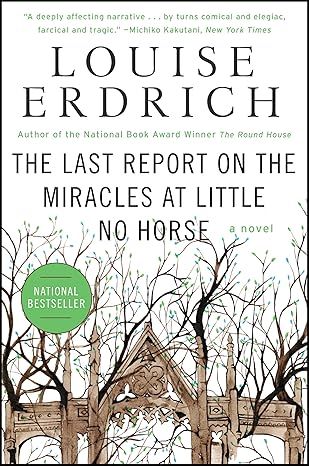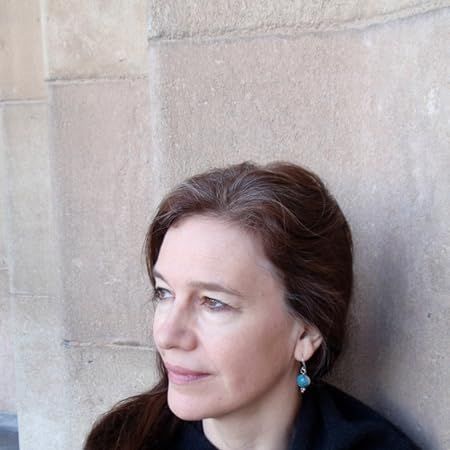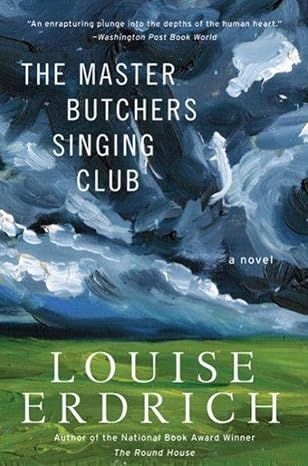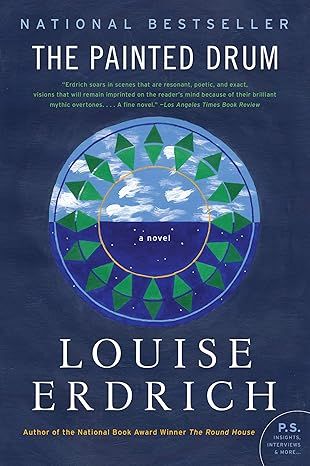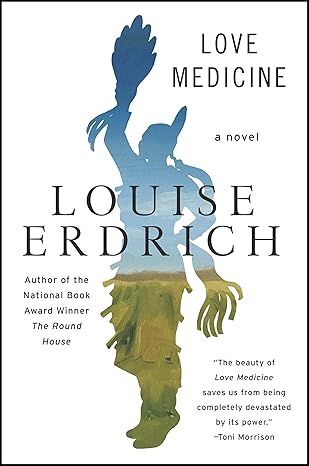The Last Report on the Miracles at Little No Horse: A Novel (P.S.)Paperback
4.5
-
1,390 ratings
A New York Times Notable Book
“Stunning. . . a moving meditation. . . infused with mystery and wonder.” —Atlanta Journal-Constitution
In a masterwork that both deepens and enlarges the world of her previous novels, acclaimed author Louise Erdrich captures the essence of a time and the spirit of a woman who felt compelled by her beliefs to serve her people as a priest. The Last Report on the Miracles at Little No Horsedeals with miracles, crises of faith, struggles with good and evil, temptation, and the corrosive and redemptive power of secrecy.
For more than a half century, Father Damien Modeste has served his beloved Native American tribe, the Ojibwe, on the remote reservation of Little No Horse. Now, nearing the end of his life, Father Damien dreads the discovery of his physical identity, for he is a woman who has lived as a man. To further complicate his quiet existence, a troubled colleague comes to the reservation to investigate the life of the perplexing, possibly false saint Sister Leopolda. Father Damien alone knows the strange truth of Leopolda's piety, but these facts are bound up in his own secret. He is faced with the most difficult decision: Should he tell all and risk everything . . . or manufacture a protective history for Leopolda, though he believes her wonder-working is motivated solely by evil?
The Last Report on the Miracles at Little No Horse is a work of an avid heart, a writer's writer, and a storytelling genius.
Kindle
$13.99
Available instantly
Audiobook
$0.00
with membership trial
Hardcover
$1.51
Paperback
$12.99
Ships from
Amazon.com
Payment
Secure transaction
ISBN-10
0061577626
ISBN-13
978-0061577628
Print length
400 pages
Language
English
Publisher
Harper Perennial
Publication date
May 04, 2009
Dimensions
5.31 x 1 x 8 inches
Item weight
2.31 pounds
Product details
ASIN :
B000FC12JG
File size :
2743 KB
Text-to-speech :
Enabled
Screen reader :
Supported
Enhanced typesetting :
Enabled
X-Ray :
Enabled
Word wise :
Enabled
Editorial reviews
Amazon.com Review
Over the course of 13 years and five novels, Louise Erdrich has staked out a richly imagined corner of North Dakota soil--her own Yoknapatawpha, where every character is connected to every other and nothing can be said to happen for the first time. The Last Report on the Miracles at Little No Horse is no exception. The report in question comes from Father Damien Modeste, who has served the Ojibwe through a century of famine, epidemics, murders, and feuds. But the good priest is not what he appears. The prologue ends with the curiously beautiful image of the old man slowly removing heavy robes, undergarments, and, at last, a bandage wound tightly around women's breasts: "small, withered, modest as folded flowers." How--and why--could such a deception last so long? That's the first mystery. The second begins when Father Jude Miller (a name familiar to readers of The Beet Queen) arrives to investigate the life of Sister Leopolda (or Pauline Puyat, another familiar name). Was Leopolda a saint? Or its opposite, whatever that is? Miracles, after all, are a part of the reservation's everyday life; for every nun's stigmata there's a secular wonder like the death of Nanapush. Indeed, the chapter detailing this old trickster's demise is the kind of earthy, tragicomic fable Erdrich does to perfection, including as it does an extended trial by moose, death by flatulence, and not one but two lustful resurrections.
Erdrich's writing is at its best when she chronicles the bittersweet humor of reservation life. It's at its worst, sadly, when she cranks up the fog machine and goes for the violins. ("He had the odd sensation that petals drifted in the air between them, petals of a fragrant and papery citrus velvet," she tells us, telegraphing Father Jude's attraction to a woman.) But at least the book's sins are sins of ambition--this is a novelist who revisits the same territory because the capaciousness of her vision demands it. Readers may forgive Erdrich's vagueness about Father Damien's religious calling, but they will never forget her images, as lovely and surprising as figures glimpsed in a dream: the devil in the shape of a black dog, his paw in a bowl of soup; freshly planted pansies, nodding at the priests' feet "like the faces of spoiled babies"; a woman in a billowing white nightdress riding a grand piano through the "gray soup" of a flood. Moments like these are small miracles of their own. --Mary Park
From Publishers Weekly
Erdrich seems to be inhabiting her characters, so intense and viscerally rendered are her portrayals. Her prose shimmers: a piano being carried across the plains is "an ebony locust." This novel will be remembered for a cornucopia of set pieces, all bizarre and stunning: wounded and taken hostage by a bank robber and pinned to the running board of his Overland automobile, Agnes, "her leg a flare of blood," briefly touches hands with her astonished lover as the car crosses his path; old man Nanapush, impaled on fish hooks that pin him to a boat that's hitched to the antlers of a wounded moose, careens through the woods in delirious exhaustion. Writing with subtle compassion and magical imagination, Erdrich has done justice to the complexities of existence in general and Native American life in particular. First serial selections in the New Yorker have whetted appetites for this novel, and picks by BOMC and QPB, major ad/promo and an author tour will give it wide exposure. (Apr.) Copyright 2001 Reed Business Information, Inc.
From Library Journal
Readers of Erdrich's new work know right away that it concerns a mystery the elderly Father Damien Modeste, who has served on an Ojibwa reservation for decades, says as much in the impassioned missive to the Pope that opens the book. And the mystery is not that Father Damien Modeste is actually a woman in disguise, a startling secret that gets spilled in the next few pages. There is much more to come in this rich, sprawling tale (overwritten but beautifully overwritten) as it makes an anguished plunge into the past occasioned by the appearance of Father Jude Miller, sent to ascertain whether Sister Leopolda deserves sainthood. The answer to his quest lies buried in a tangled web of reservation history, and as it is slowly unwound, we encounter white abuse, Native suffering and survival, and religious and sexual ecstasy (sometimes conjoined), plus Pillagers, Morrisseys, Kapshaws, and other characters readers of Erdrich (The Antelope Wife) already know. The initial sense, then, is of treading old ground, but as the novel unfolds, it gathers strength like a giant thunderhead and strikes one right through the heart. The investigation of art as mainstay and revelation is particularly sharp, and one hopes Erdrich will pursue this line of thought in her next work. Highly recommended.
- Barbara Hoffert, "Library Journal" Copyright 2001 Reed Business Information, Inc.
Read more
Sample
Chapter One
Naked Woman Playing Chopin
1910-1912
Eighty-some years previous, through a town that was to flourish and past a farm that would disappear, the river slid—all that happened began with that flow of water. The town on its banks was very new and its main street was a long curved road that followed the will of a muddy river full of brush, silt, and oxbows that threw the whole town off the strict clean grid laid out by railroad plat. The river flooded each spring and dragged local backyards into its roil, even though the banks were strengthened with riprap and piled high with rocks torn from reconstructed walls and foundations. It was a hopelessly complicated river, one that froze deceptively, broke rough, drowned one or two every year in its icy run. it was a dead river in some places, one that harbored only carp and bullheads. Wild in others, it lured moose down from Canada into the town limits. When the land along its banks was newly broken, paddleboats and barges of grain moved grandly from its source to Winnipeg, for the river flowed inscrutably north. Across from what would become church land and the town park, over on the Minnesota side, a farm spread generously up and down the river and back into wide hot fields.
The bonanza farm belonged to easterners who had sold a foundry in Vermont and with their money bought the flat vastness that lay along the river. They raised astounding crops when the land was young—rutabagas that weighed sixty pounds, wheat unbearably lush, corn on cobs like truncheons. Then six grasshopper years occurred during which even the handles on the hoes and rakes were eaten and a U.S. cavalry soldier, too, partially devoured while he lay drunk in the insects' path. The enterprise suffered losses on a grand scale. The farm was split among four brothers, eventually, who then sold off half each so that by the time Berndt Vogel escaped the latest war of Europe, during which he'd been chopped mightily but inconclusively in six places by a lieutenant's saber and then kicked by a horse so ever after his jaw didn't shut right, there was just one beautiful and peaceful swatch of land about to go for grabs. In the time it would take for him to gather the money—by forswearing women, drinking cheap beers only, and working twenty-hour days—to retrieve it from the local bank, the price of that farm would drop further, further, and the earth rise up in a great ship of destruction. Sails of dust carried half of Berndt's lush dirt over the horizon, but enough remained for him to plant and reap six fields.
So Berndt survived. On his land there stood a hangarlike barn that once had housed teams of great blue Percherons and Belgian draft horses. Only one horse was left, old and made of brutal velvet, but the others still moved in the powerful synchronicity of his dreams. Berndt liked to work in the heat of this horse's breath. The vast building echoed and only one small part was still in use-housing a cow, chickens, one depressed pig. Berndt kept the rest in decent repair not only because as a good German he must waste nothing that had come his way but because he saw in those grand dust-filled shafts of light something he could worship.
The spirit of the farm was there in the lost breath of horses. He fussed over the one remaining mammoth and imagined one day his farm entire, vast and teeming, crews of men under his command, a cookhouse, bunkhouse, equipment, a woman and children sturdily determined to their toil. A garden in which seeds bearing the scented pinks and sharp red geraniums of his childhood were planted and thrived.
How surprised he was to find, one morning, as though sown by the wind and summoned by his dreams, a woman standing barefoot, starved, and frowzy in the doorway of his barn. She was pale but sturdy, angular, a strong flower, very young, nearly bald and dressed in a rough shift. He blinked stupidly at the vision. Light poured around her like smoke and swirled at her gesture of need. She spoke with a low, gravelly abruptness: "Ich habe Hunger."
By the way she said it, he knew she was a Swabian and thereforehe tried to thrust the thought from his mind-possessing certain unruly habits in bed. She continued to speak, her voice husky and bossy. He passed his hand across his eyes. Through the gown of nearly transparent muslin he could see that her breasts were, excitingly, bound tight to her chest with strips of cloth. He blinked hard. Looking directly into her eyes, he experienced the vertigo of confronting a female who did not blush or look away but held him with an honest human calm. He thought at first she must be a loose woman, fleeing a brothel—had Fargo got so big? Or escaping an evil marriage, perhaps. He didn't know she was from God.
Sister Cecilia
In the center of the town on the other side of the river there stood a convent made of yellow bricks. Hauled halfway across Minnesota from Little Falls brickworks by pious drivers, they still held the peculiar sulfurous moth gold of the clay outside that town. The word Fleisch was etched in shallow letters on each one. Fleisch Company Brickworks. Donated to the nuns at cost. The word, of course, was covered by mortar each time a brick was laid. Because she had organized a few discarded bricks behind the convent into the base for a small birdbath, the youngest nun knew, as she gazed at the mute order of the convent's wall, that she lived within the secret repetition of that one word...
Read more
About the authors
Louise Erdrich
Louise Erdrich is one of the most gifted, prolific, and challenging of American novelists. Her fiction reflects aspects of her mixed heritage: German through her father, and French and Ojibwa through her mother. She is the author of many novels, the first of which, Love Medicine, won the National Book Critics Circle Award and the last of which, The Round House, won the National Book Award for Fiction in 2012. She lives in Minnesota.
Read more
Reviews
Customer reviews
4.5 out of 5
1,390 global ratings
Barry L. Steely
5
The dual nature of us all.
Reviewed in the United States on March 7, 2016
Verified Purchase
We just finished this for book club. Some members had read other Erdrich books, but i wasn't even aware of her writing. I loved it. Spiritual, sometimes funny wedded to historical facts. Dual nature of good versus evil. Spiritual nature of Indian culture versus faithful Catholicism. What it is to be male or a female. A wonderful story teller. Criticism from two book club members was that they didn't like the 'magical realism', but for me that was what made it so special. A wonderful writer, great story teller. I was inspired to buy her collection of short stories, My only problem was remembering all the names, especially since most characters had two names, Ojibwe and English, but don't be put off because of that. You will be swept along by the creative story telling.
Read more
21 people found this helpful
Kindle Customer MJ
5
Why I did not see
Reviewed in the United States on September 1, 2023
Verified Purchase
It took days to read this book and so many times I was ready to stop. I kept on because, really, It's Louise Erdich. And someone on another book site said this is her favorite of Design's novels. Im so glad I finished. I will not repeat a synopsis of the novel. This is about sinners and saints, true humility and false pride. The chronology jumps all around the20th century, back and forth and back again. Stick with it because it's all to illuminate Father Damien's journey to the divine presence in the world of humanity. She/he would be vilified for the sin while the people of Little No Horse embraced his/her nature and goodness.
Read more
3 people found this helpful
Rita Reads
5
This is a book you really need to read
Reviewed in the United States on August 21, 2015
Verified Purchase
This is a great book. I don't mean "great" as in "Have a great day" or "isn't it great that it's Friday." No, I mean great as in you should read this before you die. It's rich, and full, and intricate. I didn't discover the Kashpaw and Nanapush Family Tree until I had finished the book, and gone back many times to refresh my memory on how people were related or what the book had said previously in relation to them. I am not sorry that was necessary for me, however, as it was such an enriching experience. Louise Erdrich is one of the very best writers in the United States today, and it is a privilege and a pleasure to have the opportunity to read the books she writes. I am grateful to her for writing them. Very early in the book, I read for the pure pleasure of enjoying the writing, but soon lost myself in the story. Other reviewers can, will, and have told you what this book is about. I just want to tell you that you really should read it.
Read more
4 people found this helpful
jodicoyote
5
he best book EVER
Reviewed in the United States on September 15, 2016
Verified Purchase
This is t;he best book EVER! A mesmerizing story that makes you wonder how the heck Louise Erdrich came up with and conveyed it in such exquisite language. I cried at the end of the book not because it was sad,; I didn't want to say goodbye to the characters. Because it's Louise Erdrich, at least you stay connected to those characters as their progeny appear as characters in her other works. Be prepared for the story to get off to a bit of a slow start, like a river. Fasten you life jackets because this river gets rockin' and rollin'. Her style is evocative of Latin American realismo magico where the spirit world and the here and now are not so neatly separated. Wonderful.
Read more
2 people found this helpful
B. R. Almer
5
Excellent
Reviewed in the United States on July 1, 2023
Verified Purchase
I thoroughly enjoyed this book as a really unusual and challenging life it portrays.
Top Louise Erdrich titles
View allBest Sellers
View all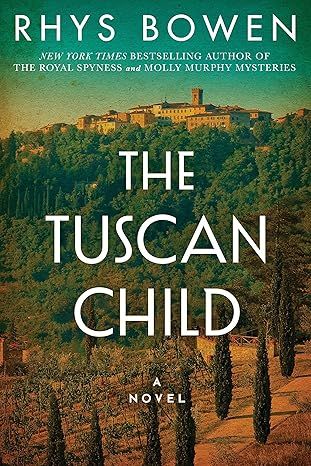
The Tuscan Child
4.2
-
100,022
$8.39
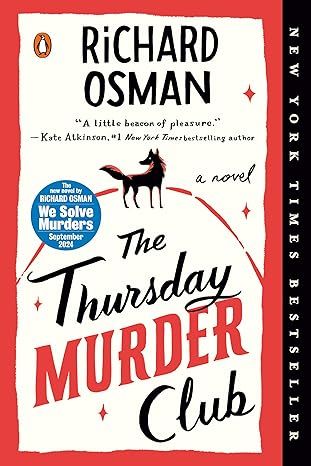
The Thursday Murder Club: A Novel (A Thursday Murder Club Mystery)
4.3
-
155,575
$6.33
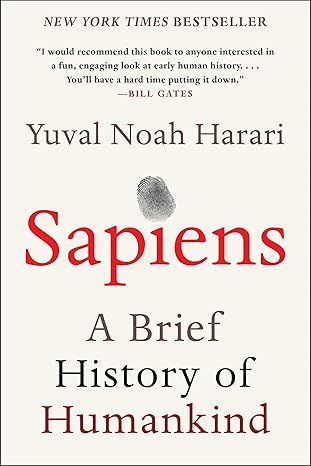
Sapiens: A Brief History of Humankind
4.6
-
140,302
$13.49
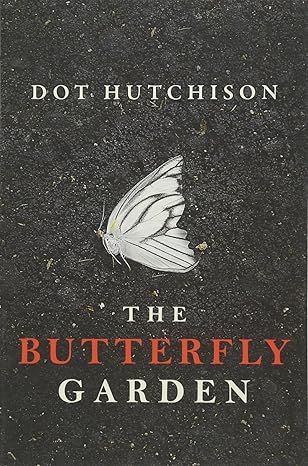
The Butterfly Garden (The Collector, 1)
4.3
-
88,556
$9.59

Things We Hide from the Light (Knockemout Series, 2)
4.4
-
94,890
$11.66

The Last Thing He Told Me: A Novel
4.3
-
154,085
$2.99

The Perfect Marriage: A Completely Gripping Psychological Suspense
4.3
-
143,196
$9.47

The Coworker
4.1
-
80,003
$13.48

First Lie Wins: A Novel (Random House Large Print)
4.3
-
54,062
$14.99

Mile High (Windy City Series Book 1)
4.4
-
59,745
$16.19

Layla
4.2
-
107,613
$8.99

The Locked Door
4.4
-
94,673
$8.53
